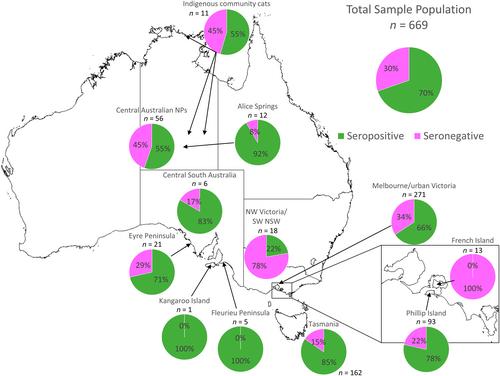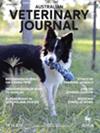High prevalence of antibodies against feline calicivirus in Australian feral and stray cat (Felis catus) populations
Abstract
Introduction
Feline calicivirus (FCV) commonly causes upper respiratory tract, oral and ocular infections in species of the family Felidae, with high prevalence amongst domestic cat (Felis catus) populations worldwide. Detection of FCV-specific antibodies in serum provides evidence of previous infection with FCV and an indication of whether a cat may be protected against clinical FCV disease. This study describes the most extensive sampling for anti-FCV antibodies in feral and stray cat populations in Australia, and examines variation in prevalence associated with cat age, sex and location.
Methods
Blood samples were opportunistically collected from 669 feral, stray or Indigenous community cats from the Northern Territory, South Australia, Victoria, south-east Tasmania and south-west New South Wales. The sera were harvested and tested for antibodies capable of neutralising the FCV vaccine strain F9 by serum-virus neutralisation assay.
Results
Of the 669 cats tested, 69.7% had detectable FCV-F9-neutralising antibodies (titres ≥5). Maturity was significantly associated with higher seroprevalence and higher antibody titres, with adult cats being more than twice as likely to have detectable FCV-neutralising antibodies than subadults. Male cats had a higher seroprevalence and slightly higher antibody titres than females. Cats living in closer proximity to humans had significantly higher seroprevalences and higher FCV-neutralising antibody titres than feral cats from more remote regions of Australia.
Conclusion
Australian feral and stray cats have a high risk of natural exposure to and infection with FCV, with the prevalence and levels of pre-existing immunity to FCV being highest amongst adult cats living in highly modified urban, peri-urban and agricultural environments.


 求助内容:
求助内容: 应助结果提醒方式:
应助结果提醒方式:


